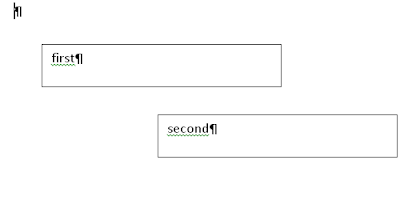Last year in September we
decided
to get rid of the writerfilter-based DOC tokenizer, and I volunteered to
actually do this. As cleanups in general have a low priority, I only
progressed with this slowly, though yesterday I completed it, that’s why I’m
writing this post. :-)
Some background: the writerfilter module is responsible for RTF and DOCX
import in Writer. As the above picture shows, the currently used DOC import is
independent from it, and there was also an other DOC import filter, that was
in writerfilter which was disabled at runtime. As I don’t like duplication, I
examined the state of the two filters, and the linked minutes mail details
how we decided that the old filter will stay, and we’ll get rid of the
writerfilter one. It’s just a matter of deleting that code, right? :-) That’s
what I thought first. But then I had to realize that the architecture of
writerfilter is a bit more complex:
It has the following components:
-
the dmapper (domain mapper), that handles all the nasty complexities of
mapping Word concepts to Writer concepts (think of e.g. sections ↔ page
styles)
-
one tokenizer for each (RTF, DOCX, DOC) format
The traffic between the tokenizers and dmapper is called tokens. Naturally
it’s not enough that tokenizers send and dmapper receives these tokens, they
should be defined somewhere as well. And that’s where I realized this work
will take a bit more time: instead of having a single token definition,
actually the ooxml tokenizer defined its own grammar, and doctok also defined
two additional grammars. And of course dmapper had to handle all of that.
;-) Given that OOXML is a superset of the DOC/RTF format, it makes sense to
just use the ooxml grammar, and get rid of the other two.
Especially that — by now you probably found this out — if I wanted to kill
doctok, I had to kill the sprm and rtf grammars as well. Otherwise just
removing doctok would break the RTF and DOCX import as well, as those also
used the rtf/sprm grammars.
So at the end, the cleaned up architecture now looks like this:
And that has multiple advantages:
-
It removes quite some code: In libreoffice-4-1, the doctok was 78849 (!)
lines of code (well, part of that was XML data, and some scripts generated
C++ code from that).
-
dmapper now doesn’t have to handle the rtf and sprm grammars anymore, so now
there is a single place in dmapper that handles e.g. the italic character
property.
-
Smaller writerfilter binary for the end user: even if doctok wasn’t enabled
at runtime, it was shipped in the installation set.
-
Hopefully it’s now a bit more easy to understand writerfilter: at least e.g.
if you want to look up the place where dmapper handles the character bold
("b") XML tag of OOXML, you don’t have to know that the binary DOC
equivalent of that is sprmCFBold, just because we have an unused DOC tokenizer
there as well. :-)
-
Given that DOC and RTF formats are a dead end, I think it’s a good thing
that in writerfilter now the grammar is OOXML (that keeps introducing new
features), rather than some dead format. ;-)

















